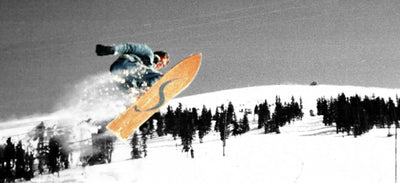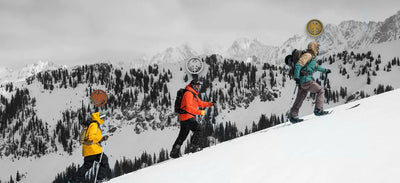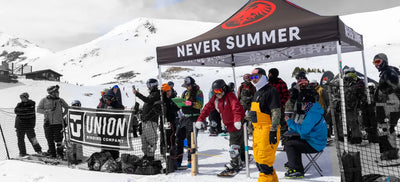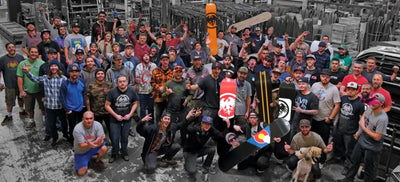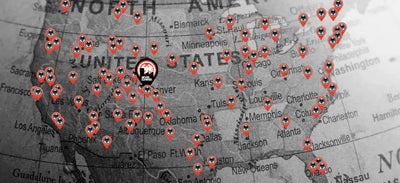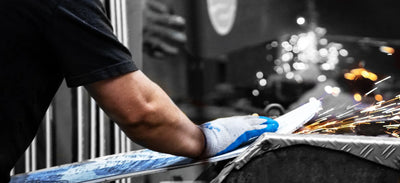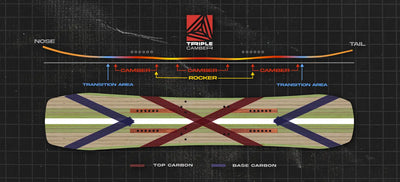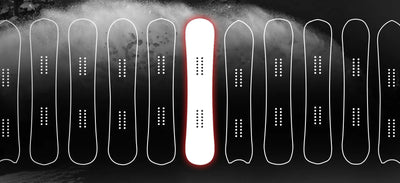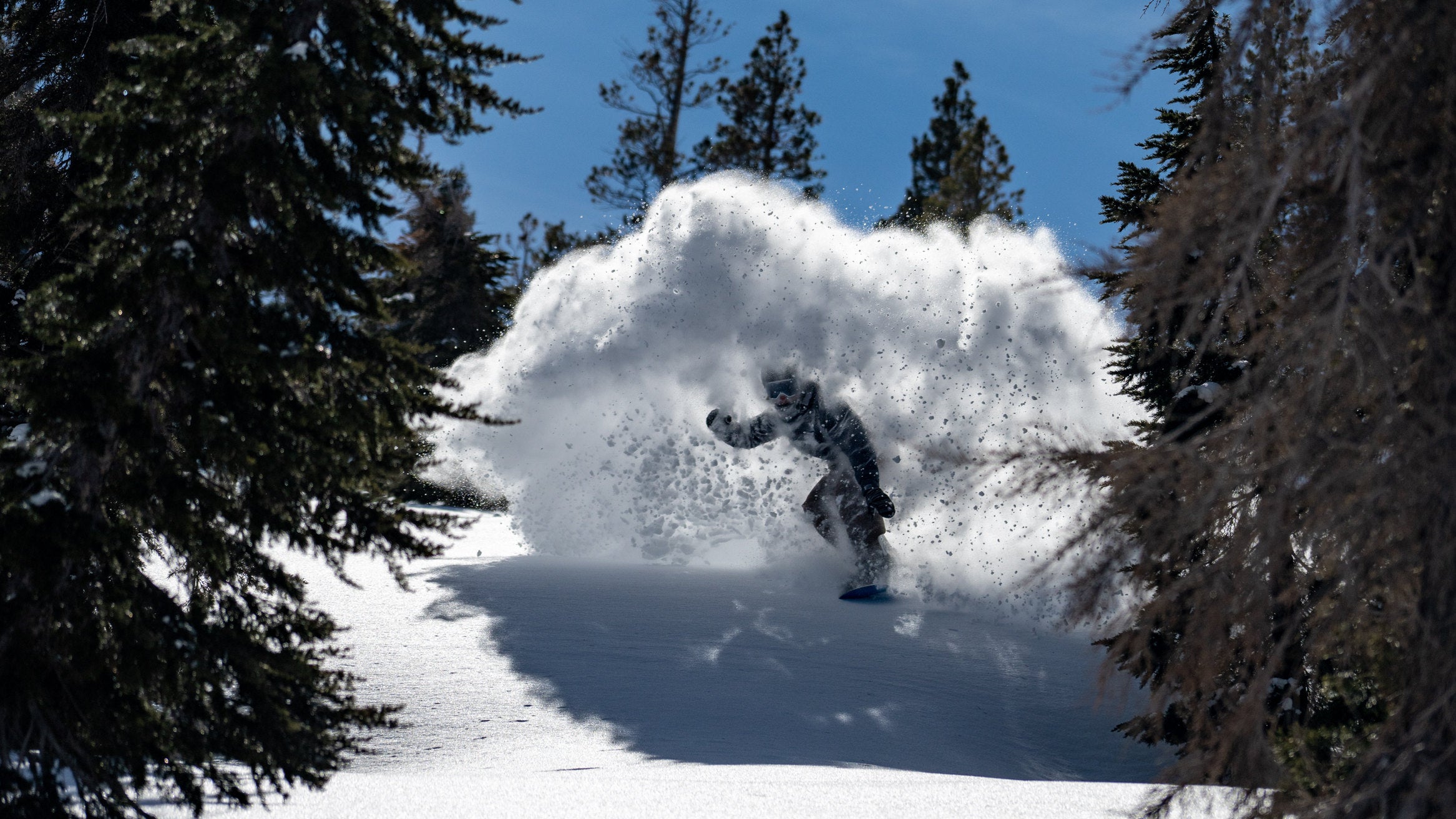Deep powder is the dream you think it is. It’s like surfing a cloud.
Craving that deep powder run?
Cruising through deep powder feels like pure bliss and freedom. The difference between deep powder and the powder you’re used to comes down to adjusting your riding style. Extra points if you get a board that has design features for powder riding—and an extra good time, too.
Here’s how to snowboard in deep powder (and how to avoid getting into a tricky spot where you have to figure out how to get out of powder).
How to Snowboard in Deep Powder
Your success in deep powder snowboarding depends on your riding abilities and your board setup. Everyone can learn how to shred through deep powder, but it’s just a learning curve. If you’ve figured out how to snowboard already, you are totally capable of making it through the deep powder.
We’ve pulled together our top tips to get you started, the best boards for the job, and FAQs for boarders wanting to try deep powder for the first time.
Tips for Snowboarding in Deep Powder
Tip 1: Keep Your Weight Over the Tail
You’ll want your weight to stay over the tail of your board by adjusting more weight into your back foot and leaning back. This keeps your nose from submarining so you can float better. It also helps you from flipping forward. The trick is finding the perfect spot between leaning far enough back that you’re not dipping your nose into the snow, but you’re also not too far back that you lose control or tire your legs out.
If you have time or plan to ride in the deep powder all day, set your stance up an inch further back on the board. This will help a lot, especially if your board has a centered stance or is a twin tip snowboard.
Tip 2: Use Open Turns Instead of Closed Turns
Deep powder is notorious for slowing you down. To keep your speed, change the shape or radius of your turns. It’s common to use closed or short radius turns on harder packed snow where the board goes across the fall line in each turn. These closed turns are “C” shaped and slow you down.
In deep powder, use an open turn or longer radius turn where your board doesn’t go fully across the fall line to keep your speed. Once you get used to riding in this new terrain, you can start turning harder, slashing, spraying up giant rooster tails of snow and getting face shots (we know you were waiting for us to say that).
Tip 3: Keep Your Speed Up
If you ride too slowly in deep powder you’ll sink in the snow instead of floating over the top of it. Digging yourself out of deep snow is exhausting and you’re not going to want to do it more than a few times in a season. You can always slow down in deep powder, but getting your speed back is always difficult.
To keep your speed up, 1) pick a line where you can keep your speed up and avoid flatter areas, 2) ride with a flatter base to keep your board on top of the snow, 3) strategically use your turn to control your speed.
Tip 4: Know Your Terrain
Deep snow is for experienced riders for a reason. In deep snow are hidden, dangerous obstacles like rocks, stumps and fallen trees. These can end your season early by tripping you up and causing a serious injury. Keep an eye on the terrain ahead at all times and learn to recognize covered hazards and know how to proceed with caution. On the fun side, you can look for things like wind lips, spines, pillows, cliff or rock jumps (based on your experience level).
For example, tree wells will mess your day up. Tree wells have a pile of powder around a tree’s branches and form a hidden cavity at the base of the tree. These are sooo hard to get out of and dangerous. If it’s possible to get a view of the terrain before you start boarding, that’s ideal. You can get this through hiking it, a gondola ride, a chairlift, or a helicopter.
Tip 5: Ride a Powder Board
The best experience you’ll get cruising in deep powder is by riding a board designed for that terrain. These boards are made to float above that deep pow and give you the maneuverability needed to get around those hazards we talked about in the last tip. We get it, though—it’s not always in the budget.
If you don’t get too many deep powder days or you prefer to ride at resorts instead of the backcountry, you probably don’t need a deep powder board. But, if you’re planning on being in the backcountry regularly—it’d be worth the investment to be able to get clean, crisp runs.
What Type of Snowboard is Best for Powder?
Among many opinions in the snowboarding world, the consensus is that a Rocker Camber Profile makes for the best deep powder board. Rocker Camber’s have camber tips and tails, which just means their tip and tail turn upward. The Rocker Camber between your feet makes the board touch the ground right in the middle. This means you don’t have to set your stance back when you hit deep powder—the board is ready to go as is.
Many of the Never Summer boards also feature a Blower Stance that lets you set your stance back, as we talked about above. As a reminder, this keeps the tip of your board from submarining and pulling you to the ground. This makes Never Summer boards great for riding resort-style or backcountry in the deep powder.
Below are a few of our top recommendations for deep powder boards, but you can also check out our post about how to choose a snowboard if you’re looking for something different. Our most popular deep powder boards this season are the Swift and Harpoon. Check them out!
FAQs
Should I set my bindings back for powder?
If you have a twin tip board, setting your stance back will help with floatation in deeper powder. With Never Summer’s patented Rocker Camber, it’s not as necessary—your board is ready for deep powder at all times.
Is snowboarding in powder hard?
Once you adjust your technique and get the hang of it, the weightless feeling of snowboarding in powder is a sensation second to none. It truly is like surfing the clouds, soft and doesn’t hurt when you fall.
Is a longer snowboard better for powder?
A longer board has more surface area for rise in deep powder. However, with a wider nose or higher volume board like our Shaper Series you can get optimum float without the added length. You’ll also get agile maneuverability of the shorter length.






